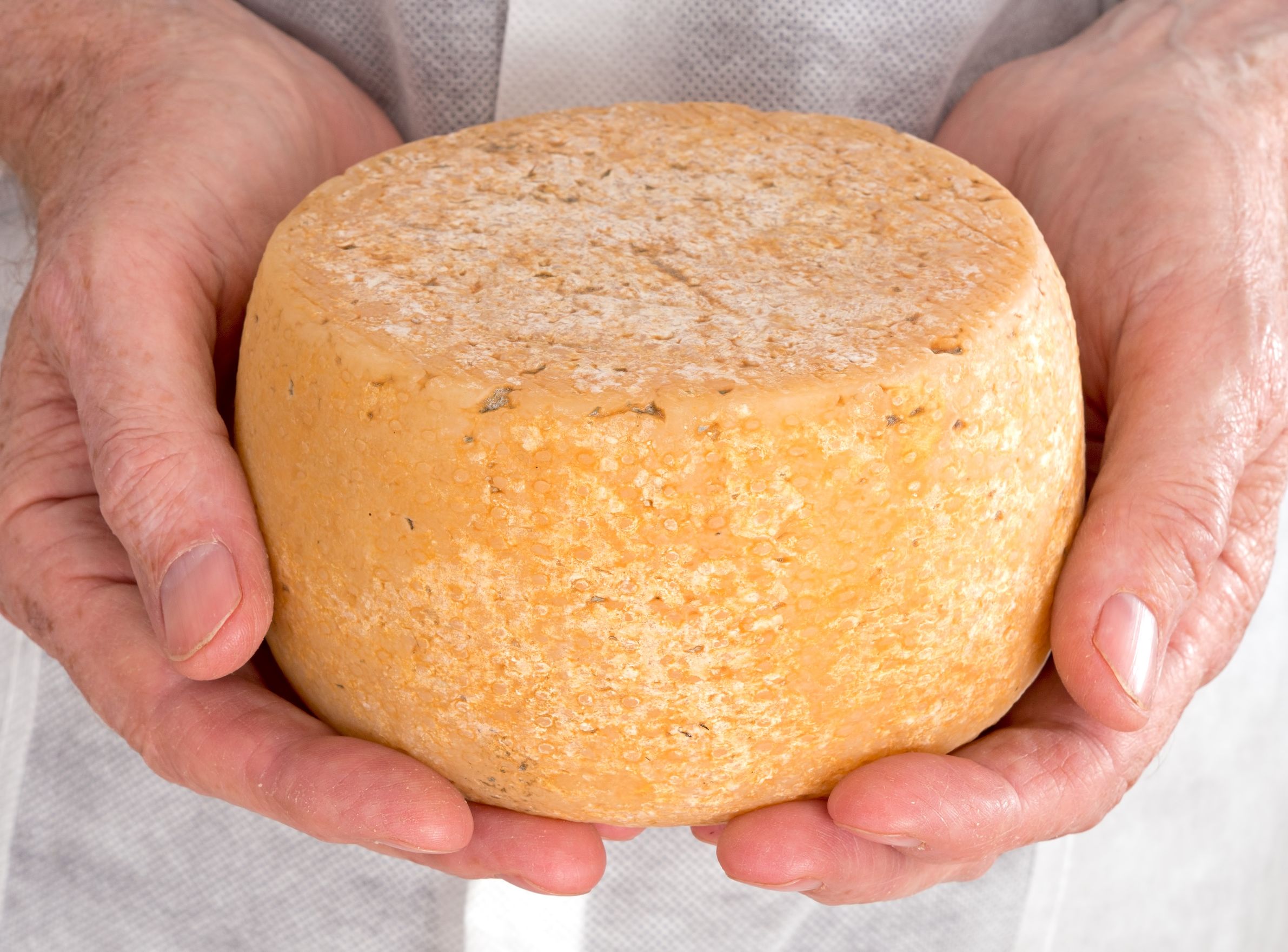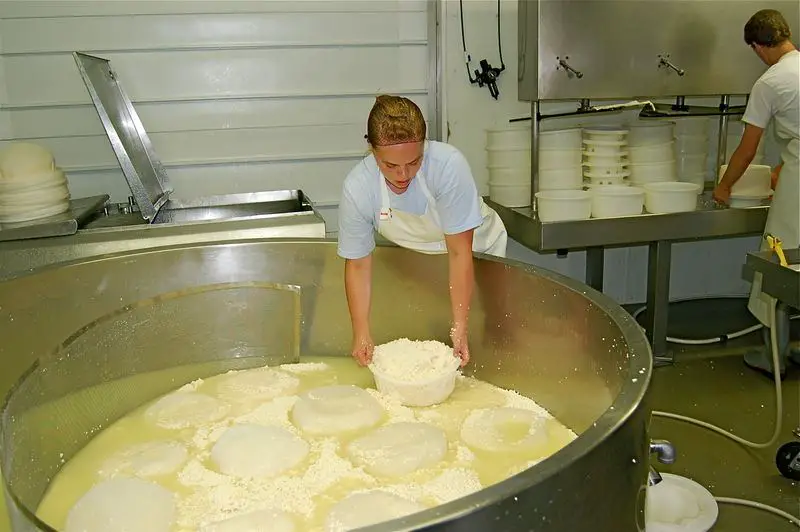Making cheese at home may sound like a daunting task, but it can actually be a fun and rewarding experience! Whether you're a culinary enthusiast or simply looking for a new hobby, cheese making can offer a unique twist to your cooking skills. With just a few basic ingredients and some simple techniques, you can create a variety of delicious cheeses right in your own kitchen.
In this post, we'll guide you through the essentials of cheese making, breaking it down into manageable steps. You'll discover the essential ingredients you'll need and some handy tips to ensure your cheese turns out perfectly every time. So, roll up your sleeves, and let's dive into the art of cheese making!
Essential Ingredients for Homemade Cheese

The first step in your cheese-making journey is gathering the right ingredients. While the specific components can vary depending on the type of cheese you’re aiming for, there are a few staples that you'll find in nearly every recipe:
- Milk: The foundation of any cheese, milk can be sourced from cows, goats, or sheep. Make sure to use high-quality, preferably raw or homogenized milk for the best flavor.
- Rennet: This natural enzyme helps in coagulating the milk, setting the stage for curds to form. You can find rennet in liquid or tablet form at specialty grocery stores or online.
- Culture: Cheese cultures, also known as starters, are bacteria that help develop flavor and texture in the cheese. Different cultures yield different flavors, so choose based on the cheese type.
- Salt: While salt is a basic ingredient, it is crucial for flavor and preservation. Use non-iodized salt like kosher or sea salt, as iodine can interfere with the cheese-making process.
- Optional Additives: Depending on your recipe, you might add herbs, spices, or preservatives for enhanced flavor or texture.
With these essentials in your pantry, you're well on your way to crafting your very own delicious cheese. Remember, cheese making is as much about experimentation as it is about technique, so don’t hesitate to tweak recipes and make them your own!
Also Read This: DIY Hair Puff Tutorials: Watch Video Guides on Dailymotion
3. Equipment Needed for DIY Cheese Making

Making cheese at home can be an exciting adventure, but you'll need the right tools to get started. Here’s a handy list of the essential equipment you'll need for your cheese-making journey:
- Large Pot: A heavy-bottomed pot (at least 5-8 quarts) is crucial for heating milk evenly.
- Thermometer: A reliable kitchen thermometer helps you monitor the temperature accurately; aim for one that can register up to 200°F.
- Slotted Spoon: This will be great for stirring and separating curds from whey.
- Cheesecloth: You’ll need cheesecloth for draining the curds and whey. Ensure it’s a fine weave to avoid losing any curds.
- Colander: A good colander is essential for straining the curds effectively.
- Cheese Mold: Depending on the cheese type, you might require specific molds to shape your cheese.
- Measuring Cups and Spoons: Accurate measurements are key to successful cheese-making, so don’t skip these!
- pH Meter or Test Strips: For advanced cheese-making, keeping track of acidity can help you yield better results.
Gathering these basic tools will equip you to craft your delectable cheese right in your kitchen! Just remember, the quality of your equipment can affect your end product, so investing in good tools is worth it.
Also Read This: Understanding Dailymotion’s Advertising Revenue Share
4. Step-by-Step Process for Making Cheese

Ready to embark on your cheese-making adventure? Here’s a simple, step-by-step guide to help you create your first batch of homemade cheese. Let's dive in!
- Prepare the Milk: Pour your milk into the large pot and slowly heat it to the recommended temperature (usually around 180°F). Stir gently to prevent scorching.
- Add the Rennet: Once heated, remove the pot from the heat. Depending on your cheese recipe, add rennet (liquid or tablet) to the milk while stirring gently for about 30 seconds.
- Let it Sit: Cover the pot and let the milk sit undisturbed for about 10-30 minutes, depending on your recipe. During this time, curds will form!
- Cutting the Curds: Once set, cut the curds with a long knife or spatula into even cubes. This helps release the whey.
- Cook the Curds: Gently heat the curds while stirring continuously until they firm up (follow your specific recipe for timings).
- Drain the Curds: Using your colander lined with cheesecloth, pour the curds and whey to drain off excess liquid. Gather the cheesecloth and give it a gentle squeeze if you want a firmer texture.
- Salt and Flavor: Incorporate salt and any additional herbs or spices now, mixing thoroughly for an even flavor.
- Mold and Age: Place the curds into a cheese mold to shape it (if applicable) and follow your recipe's aging instructions for the best results.
And there you have it - your very own homemade cheese! Keep practicing, and don’t hesitate to experiment with different flavors and styles. Happy cheese-making!
Also Read This: Understanding the Rumble Website and Its Popularity as a Video Platform
Common Mistakes to Avoid in Cheese Making
Making cheese can be a delightful and rewarding experience, but it’s not without its pitfalls. Here are some common mistakes that novice cheesemakers often encounter, along with tips on how to sidestep them.
- Not Measuring Ingredients Accurately: Precision is key in cheese making. Use scales and measuring cups to ensure you're using the right amounts of milk, cultures, and rennet. A minor error can lead to major issues in texture and flavor.
- Ignoring Temperature: Cheese making is a delicate dance of temperature control. Always use a thermometer to monitor the milk's temperature during curdling and cooking stages. Too hot or too cold can ruin your cheese.
- Rushing the Process: Good cheese takes time. Don’t try to rush through the steps or skip vital resting periods; allow your cultures to develop fully. Patience will yield a better flavor and texture.
- Using Old Ingredients: Freshness matters in cheese making. Always check the expiry dates on your milk, rennet, and cultures. Using expired ingredients can lead to poor results.
- Neglecting Hygiene: Cleanliness is crucial in cheese making. Make sure all your equipment and workspace are sanitized to avoid contamination that can spoil your cheese.
By keeping these common mistakes in mind, you’ll be well on your way to creating delicious homemade cheeses without any unnecessary hiccups!
Also Read This: Accessing the Old Dailymotion Layout with Easy Instructions
Exploring Different Cheese Varieties
Once you’ve mastered the basics, the real fun begins! The world of cheese is vast and varied, offering a plethora of flavors and textures to explore. Here’s a quick overview of some popular cheese varieties and their characteristics:
| Cheese Type | Texture | Flavor Profile |
|---|---|---|
| Cheddar | Firm | Rich, sharp, and nutty |
| Brie | Soft | Creamy with earthy hints |
| Blue Cheese | Crumbly | Pungent, tangy, and salty |
| Mozzarella | Stretchy | Fresh, mild, and slightly tangy |
| Parmesan | Hard | Nutty and savory with a crunchy texture |
Each cheese type has its own unique process for creation, so don't hesitate to experiment with different recipes. Whether it’s a creamy Brie or sharp Cheddar, you can let your creativity shine through. Happy cheesemaking!
How to Make Cheese - DIY Cheese Making Tips on Dailymotion
Making cheese at home can be a rewarding and enjoyable experience. With a little patience, the right ingredients, and some guided techniques, you can create delicious cheese that suits your taste. Here’s a comprehensive guide to help you get started on your DIY cheese-making journey.
Before diving into the methods, let's gather the essential items you'll need:
- Milk (whole or raw is preferred)
- Rennet (liquid or tablet form)
- Citric acid
- Salt
- Cheese-making cultures (optional for some types of cheese)
- Cheese cloth
- A large pot
- Thermometer
- Slotted spoon
- Colander
Here are some basic steps you can follow to make cheese:
| Step | Description |
|---|---|
| 1. Gather Ingredients | Collect all necessary items listed above. |
| 2. Heat the Milk | Pour the milk into the large pot and heat it slowly to the desired temperature (usually around 190°F or 88°C). |
| 3. Add Rennet and Citric Acid | Add the rennet and citric acid according to your recipe to form curds. |
| 4. Cut the Curds | Once the curds form, cut them into small pieces for whey separation. |
| 5. Drain the Curds | Place a colander lined with cheese cloth over a bowl and pour in the curds to drain the whey. |
| 6. Salt and Shape | Add salt for flavor, mix well, and shape the curds into your desired cheese form. |
With the right techniques and dedication, you can create a variety of cheeses ranging from mozzarella to cheddar. For visual learners, check out cheese-making videos on Dailymotion for step-by-step guidance.
Conclusion
Making cheese at home is an exciting culinary adventure that allows you to experiment with flavors and customize your cheese according to your preferences. Enjoy the process and relish the fruits of your labor!
 admin
admin








